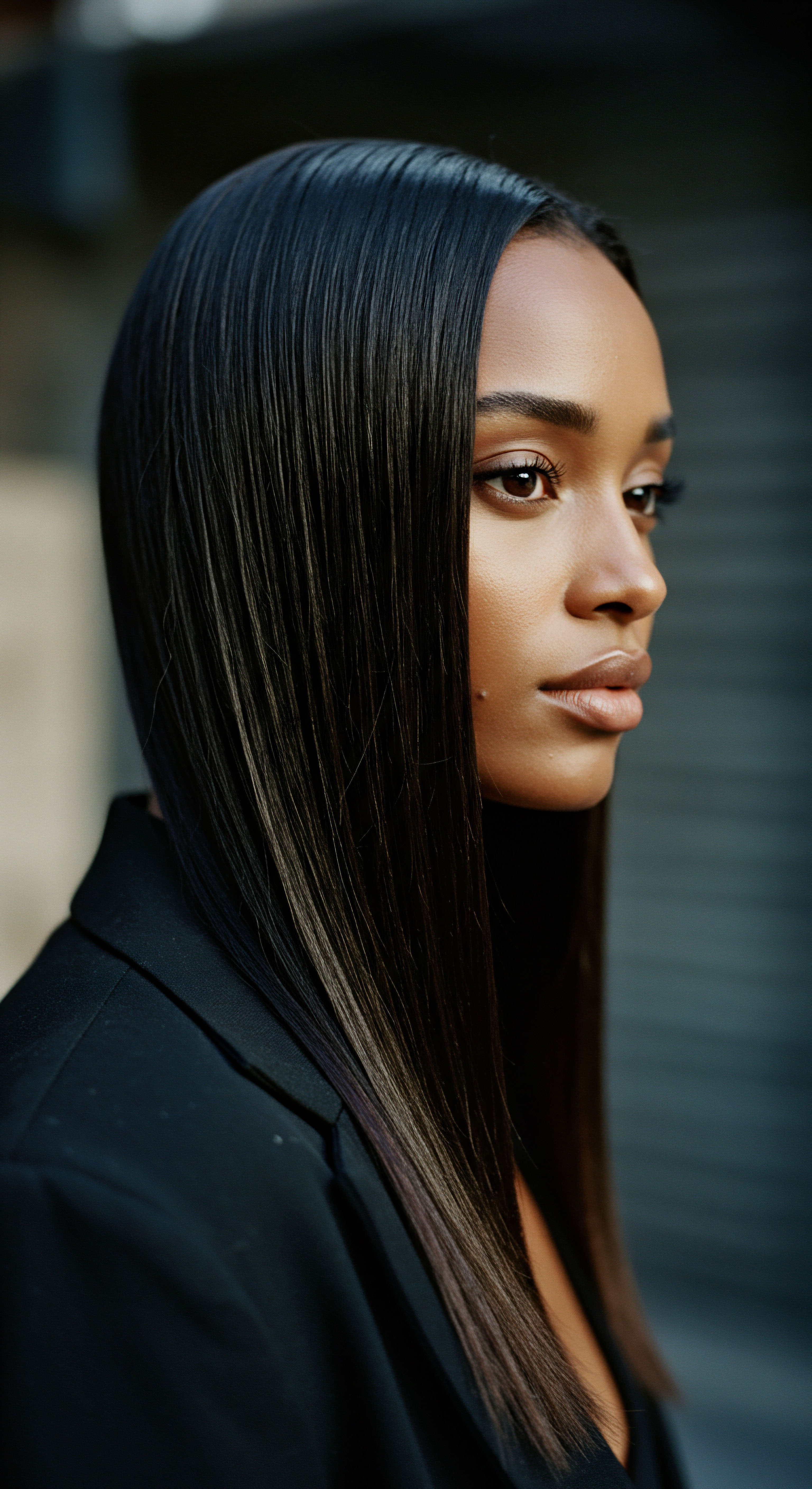
Roots
The gentle hush of evening often invites contemplation, a quiet moment before the world pauses its busy rhythm. For those with textured hair, this pause can bring a soft inquiry ❉ what precisely transpires with our precious strands as we drift into slumber? The answer begins not with elaborate routines, but with the very foundations of our hair’s being, specifically the distribution of its natural oils.
To truly appreciate nighttime care, one must first understand the intrinsic architecture of textured hair and the journey of sebum, the scalp’s own conditioning gift. This foundational understanding is the bedrock upon which all effective care is built, a quiet wisdom waiting to be uncovered.

The Scalp’s Own Secretion
At the heart of hair health lies sebum, an oily, waxy substance secreted by the sebaceous glands nestled within our scalp. This natural balm plays a protective role, shielding the scalp and hair from environmental stressors while helping to maintain suppleness. For straight hair, the path for sebum from root to tip is a relatively unobstructed slide.
The cylindrical shape of the hair shaft and its direct emergence from the scalp allow for a swift, even coating. This efficiency often leads to straight hair appearing greasy more quickly, a common observation for those with straighter patterns.
Sebum, the scalp’s natural conditioning agent, travels more readily down straight hair shafts than coiled ones.
Conversely, textured hair, with its remarkable array of spirals, kinks, and coils, presents a far more circuitous route for this vital oil. The very architecture that gives textured hair its distinctive beauty also creates a challenge for sebum distribution. Follicles producing curly hair often tunnel down at an angle, and the hair shaft itself is not perfectly round but rather oval or even flat in cross-section.
These structural variances mean that sebum struggles to descend the entire length of the strand, leaving the mid-shaft and ends typically drier than the scalp. This inherent characteristic means that textured hair is naturally predisposed to dryness at its ends, a biological reality that shapes much of its care requirements.
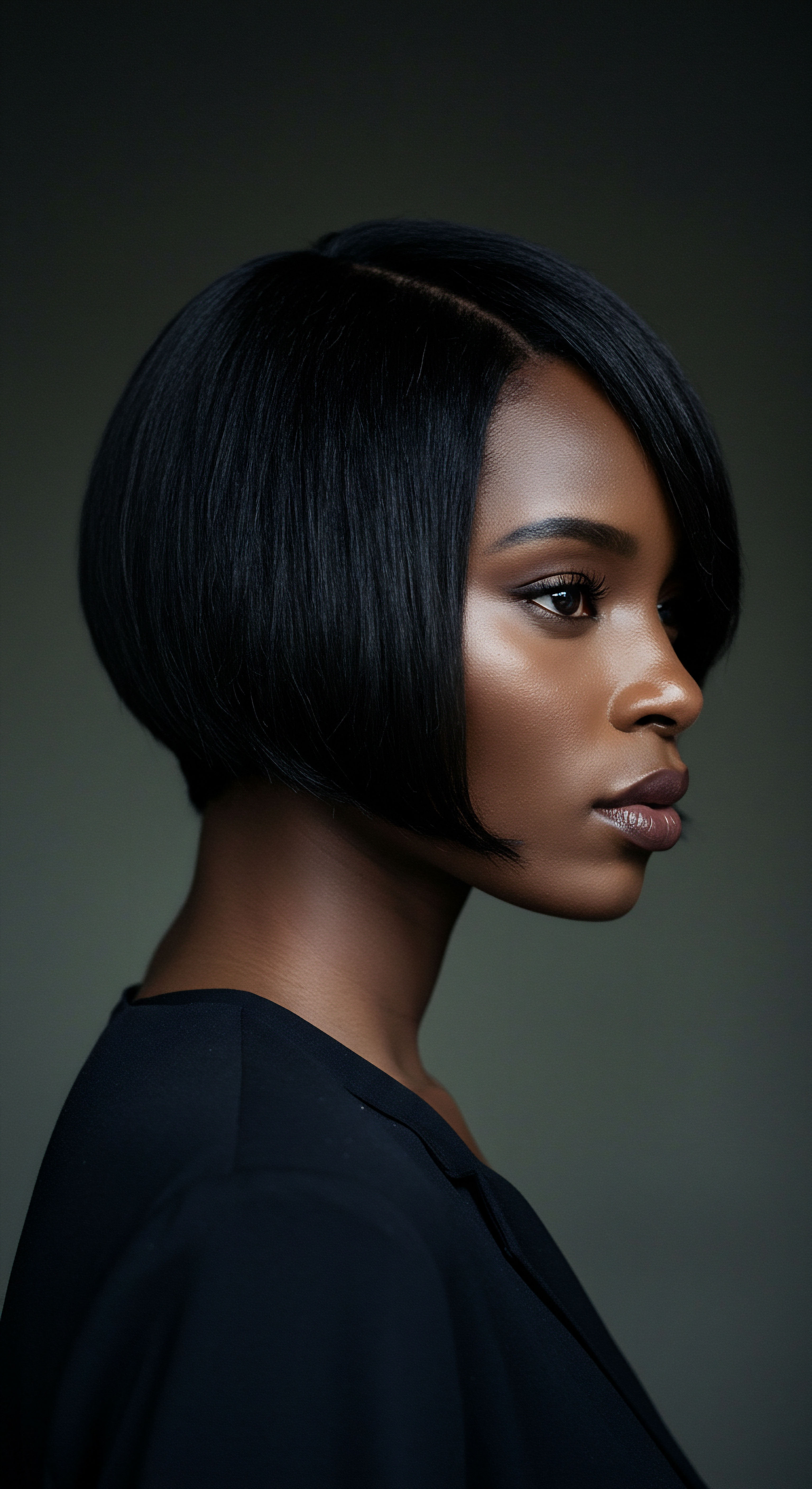
Hair Anatomy and Its Influence on Oil Movement
Each hair strand, seemingly simple, is a complex biological structure. It comprises three main layers ❉ the outermost Cuticle, a protective layer of overlapping scales; the Cortex, which provides strength and elasticity; and the innermost Medulla, often absent in finer hair. The cuticle’s condition directly impacts how hair absorbs moisture and how prone it is to damage.
In textured hair, the cuticle layers tend to be more lifted or open at various points along the coil due to the hair’s bending and twisting form. This anatomical difference not only hinders the smooth descent of sebum but also makes textured hair more porous, meaning it can absorb moisture quickly but also lose it just as rapidly.
Understanding this inherent dryness, particularly at the ends, is fundamental. When we consider nighttime care, we are, in essence, compensating for nature’s design. The sleep hours, when friction and environmental exposure are constant, can exacerbate this natural tendency toward dehydration if not addressed thoughtfully.

What Makes Textured Hair Different?
The physiological distinctions of textured hair are profound and shape its needs.
- Follicle Shape ❉ A round follicle produces straight hair, while an oval or flattened oval follicle creates curly or coily patterns. The flatter the oval, the tighter the curl.
- Hair Angle ❉ Straight hair follicles descend vertically into the scalp, while textured hair follicles emerge at an angle, contributing to the curl pattern. This angle further impedes sebum’s travel.
- Cuticle Configuration ❉ The scales of the cuticle in textured hair can be more open or lifted at the curves of the strand, contributing to higher porosity and susceptibility to moisture loss.

The Hair Growth Cycle and Sebum’s Role
Hair growth follows a cycle with three main phases:
- Anagen ❉ The active growth phase, lasting several years.
- Catagen ❉ A transitional phase where growth ceases.
- Telogen ❉ The resting phase, after which the hair sheds.
Sebum is continuously produced during the anagen phase, providing lubrication to the growing hair. Its presence is vital for the hair’s initial strength and flexibility as it emerges from the scalp. However, as hair ages and grows longer, especially in textured patterns, the influence of freshly secreted sebum diminishes further down the strand. This means that older, longer hair, particularly the ends, has had less consistent exposure to this natural conditioner over its lifespan, making external conditioning agents even more critical for its integrity.
| Hair Type Straight (Type 1) |
| Follicle Shape Round |
| Sebum Travel Effortless, even coating to ends |
| Hair Type Wavy (Type 2) |
| Follicle Shape Slightly Oval |
| Sebum Travel Moderate difficulty, some ends dry |
| Hair Type Curly (Type 3) |
| Follicle Shape Oval |
| Sebum Travel Challenging, ends often dry |
| Hair Type Coily (Type 4) |
| Follicle Shape Flattened Oval |
| Sebum Travel Very challenging, ends very dry |
| Hair Type Understanding sebum's journey helps tailor care. |
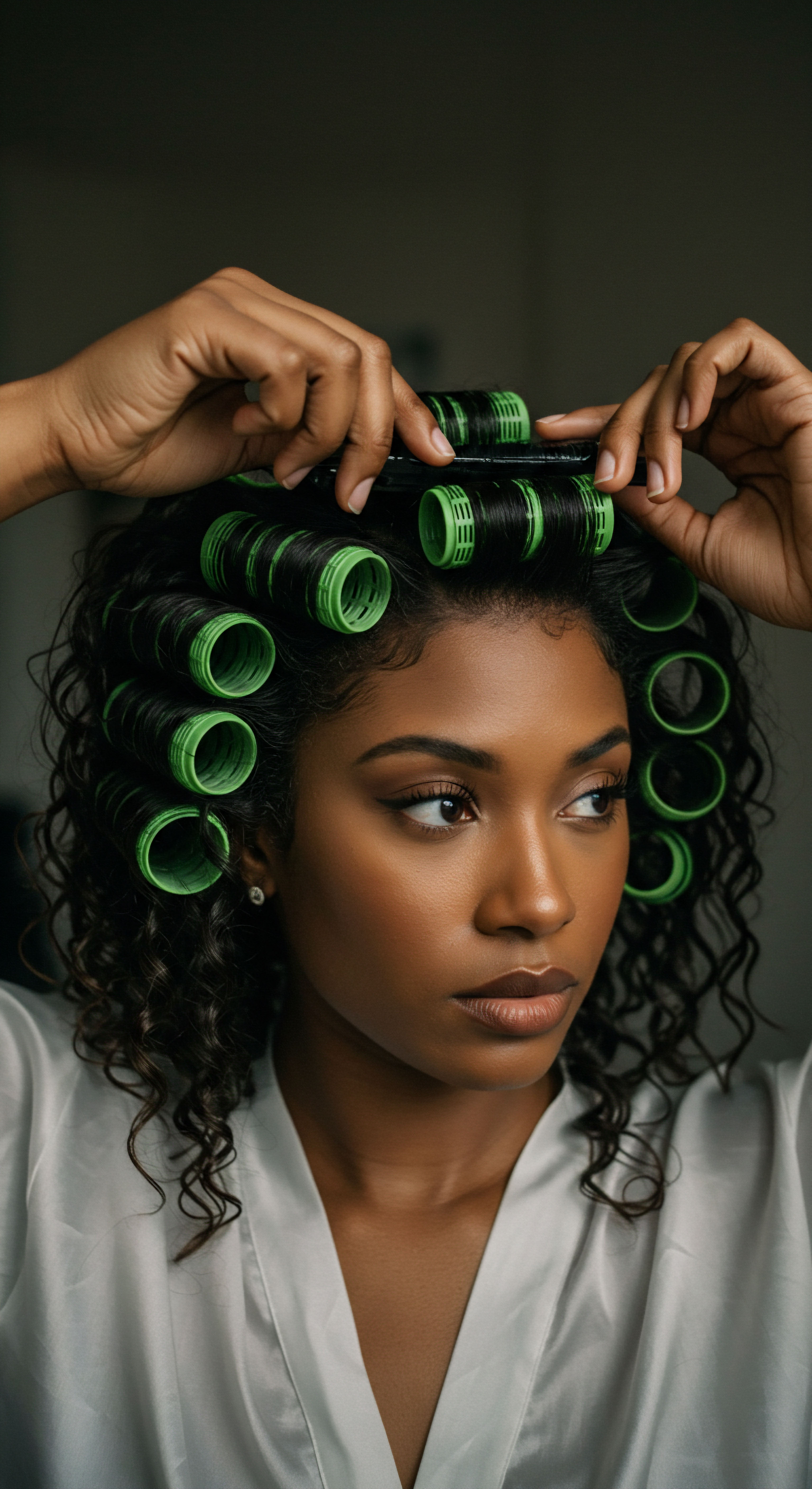
Ritual
As the sun dips below the horizon, and the world outside settles into quietude, a different kind of preparation begins for many. This is the time when the understanding of our hair’s natural oil distribution truly transforms into mindful action. Nighttime care, far from being a mere afterthought, emerges as a vital ritual, a deliberate practice designed to safeguard and replenish textured strands. It is a time when we apply the wisdom gleaned from hair’s inherent structure to create a sanctuary for our coils and curls, ensuring they greet the new day not only preserved but strengthened.

The Nighttime Sanctuary Essential Sleep Protection and Bonnet Wisdom
One of the most significant aspects of nighttime care for textured hair is the creation of a protective environment. During sleep, our heads move, causing friction between hair and pillowcases. This constant rubbing, especially against abrasive materials like cotton, can lead to raised cuticles, tangles, frizz, and ultimately, breakage. For textured hair, where the cuticle is already prone to lifting, this friction is particularly damaging, stripping away what little natural oil may have traveled down the strand and disrupting the curl pattern.
This is where the wisdom of the bonnet, scarf, or silk pillowcase becomes undeniable. These sleep accessories provide a smooth, low-friction surface for hair to glide against. Silk and satin, with their smooth fibers, significantly reduce mechanical stress on the hair shaft, helping to keep the cuticle flat and intact. This protective barrier helps to prevent the physical abrasion that leads to frizz and breakage, allowing the hair to retain its shape and moisture more effectively overnight.
Protective sleep coverings like bonnets significantly reduce friction, safeguarding textured hair from nighttime damage.
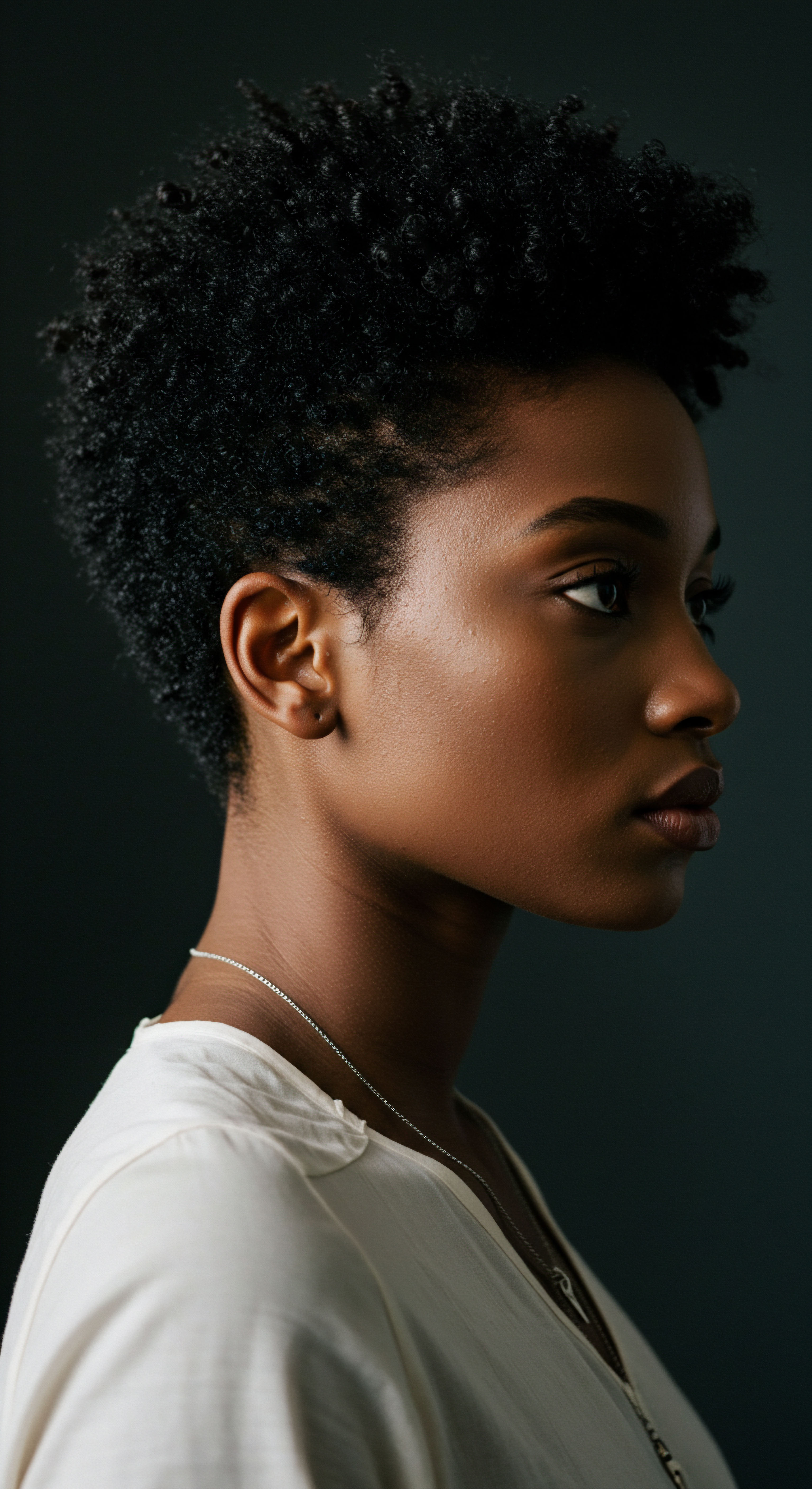
How Do Sleep Coverings Aid Oil Distribution?
While bonnets do not directly alter the scalp’s sebum production, their protective qualities indirectly support healthier oil distribution and retention.
- Reduced Friction ❉ By minimizing friction, bonnets prevent the mechanical removal of sebum from the hair shaft, allowing what oil has traveled down to remain on the strands.
- Moisture Retention ❉ They create a micro-environment that helps to seal in moisture from conditioners and stylers applied before bed, preventing it from evaporating into the air or being absorbed by a cotton pillowcase. This retained moisture, along with any natural oils, keeps the hair supple.
- Preserved Style ❉ Keeping the hair undisturbed minimizes the need for excessive manipulation in the morning, which can further distribute natural oils more gently and prevent additional damage.

Building Personalized Textured Hair Regimens for Night
A thoughtful nighttime regimen acknowledges the inherent dryness of textured hair’s lengths and ends. It often begins with replenishing moisture and providing a protective seal. This might involve applying a leave-in conditioner, a light oil, or a styling cream to the mid-lengths and ends, areas where sebum struggles to reach.
The choice of product depends on hair porosity and density. For instance, low porosity hair might prefer lighter liquids, while high porosity hair might benefit from heavier creams or butters.
The order of application also plays a role. Many follow the “LOC” method (Liquid, Oil, Cream) or “LCO” (Liquid, Cream, Oil) to layer products, aiming to hydrate first with a water-based product (liquid), then seal that moisture with an oil, and finally provide additional conditioning and hold with a cream. This layering approach ensures that the hair receives ample moisture and that this moisture, along with the natural oils, is effectively locked in for the hours of sleep.
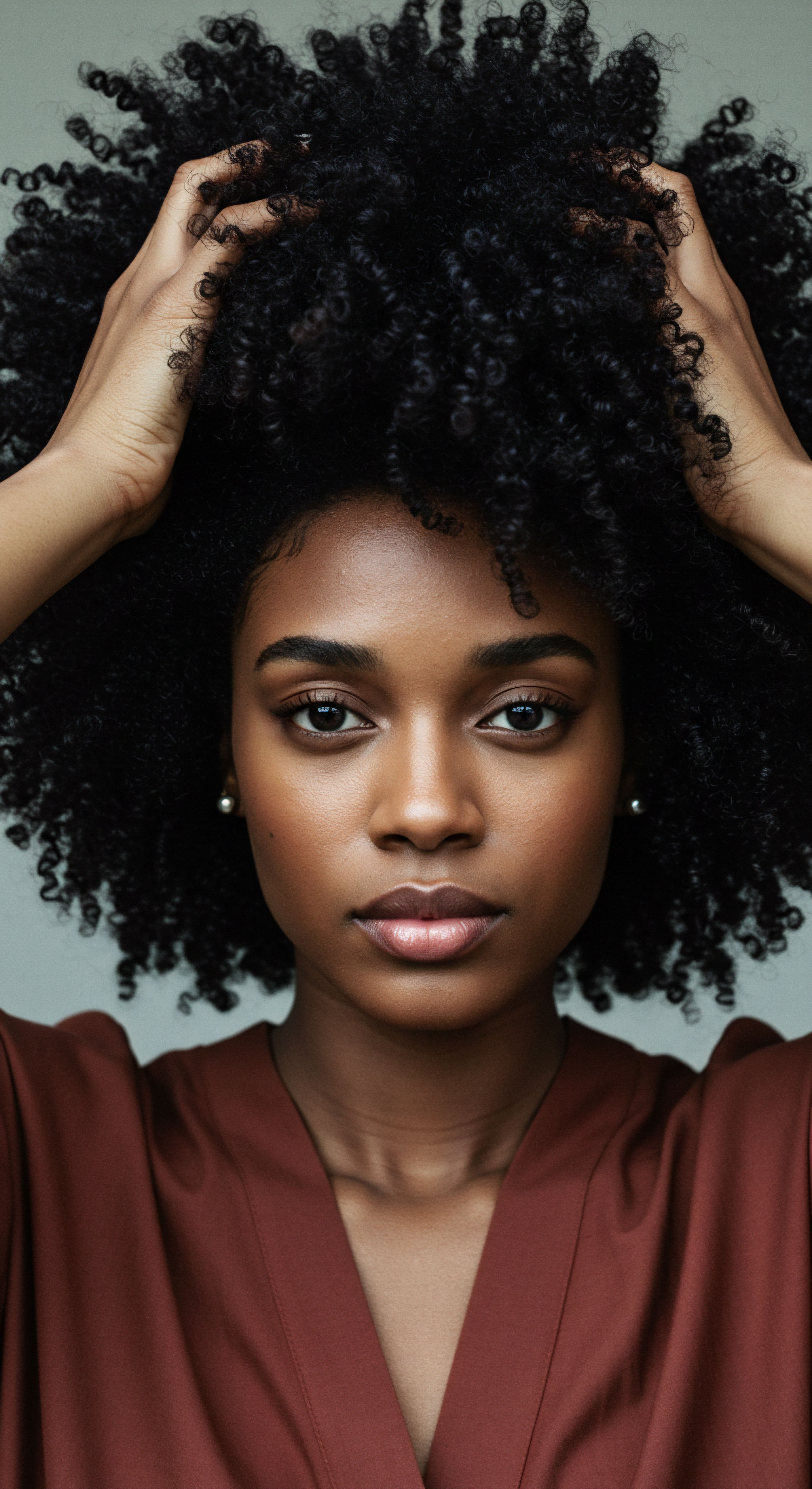
Ingredient Considerations for Nighttime Care
When selecting products for nighttime application, certain ingredients stand out for their ability to support textured hair’s needs:
- Humectants ❉ Ingredients like glycerin or hyaluronic acid draw moisture from the air into the hair, keeping it hydrated.
- Emollients ❉ Oils (like jojoba, argan, or shea butter) and fatty alcohols smooth the cuticle, reduce friction, and provide a protective layer.
- Proteins ❉ Hydrolyzed proteins can temporarily strengthen the hair shaft, reducing breakage from friction.
A simple table illustrates how different product types aid in oil distribution and moisture retention:
| Product Type Leave-in Conditioner |
| Primary Action Hydration, Detangling |
| Impact on Oil/Moisture Introduces water, aids sebum spread |
| Product Type Hair Oil |
| Primary Action Sealing, Softening |
| Impact on Oil/Moisture Locks in moisture, adds lubrication |
| Product Type Styling Cream/Butter |
| Primary Action Definition, Conditioning |
| Impact on Oil/Moisture Provides sustained moisture, protects |
| Product Type Layering products enhances nighttime protection and hydration. |
The consistent application of these products, combined with the physical protection of a bonnet or silk pillowcase, creates a ritual that directly counteracts the natural challenges of oil distribution in textured hair, allowing strands to remain moisturized and resilient through the night.
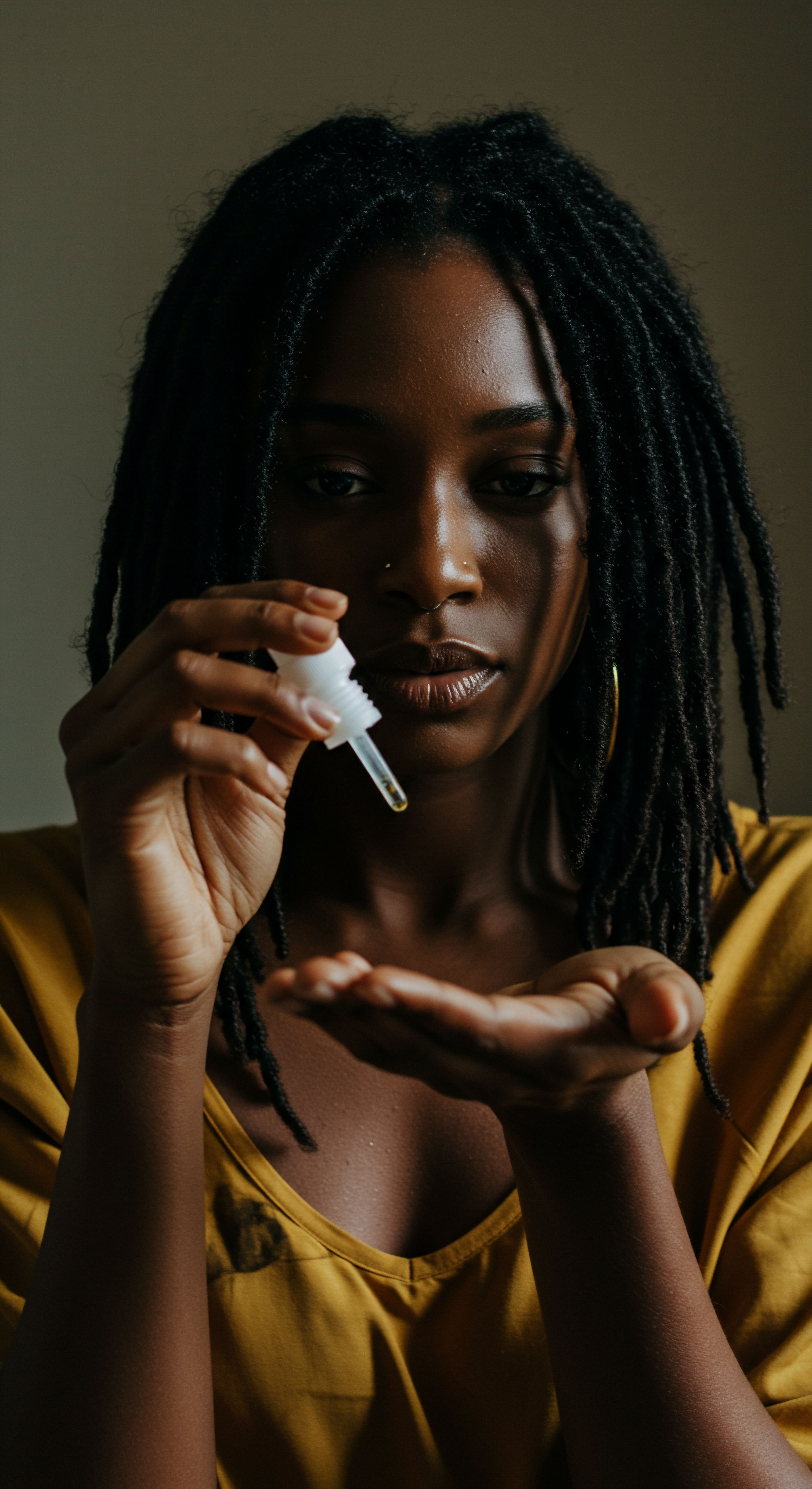
Relay
Beyond the tangible act of applying products and donning a bonnet, the nighttime care of textured hair speaks to a deeper interplay of biological imperatives, cultural legacies, and personal well-being. How does the quiet of our sleeping hours truly reshape the destiny of our strands, moving beyond simple protection to a profound renewal? This query invites us to consider the less apparent forces at play, from the microscopic world of the scalp to the echoes of ancestral practices, all converging to redefine what it means to care for textured hair while the world rests.
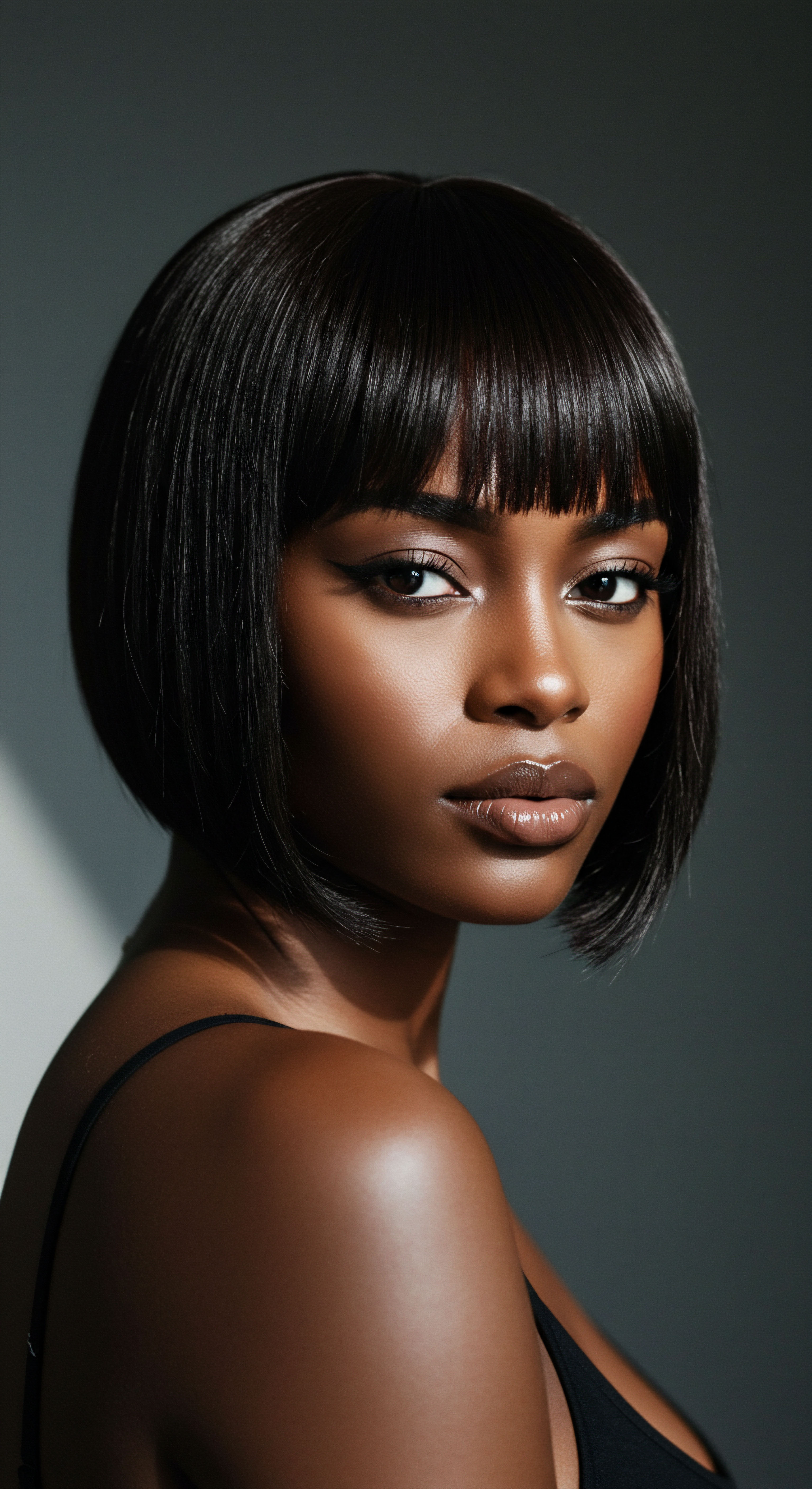
The Scalp Microbiome and Its Nocturnal Dance
The scalp, far from being a sterile surface, hosts a bustling ecosystem of bacteria, fungi, and yeasts – its very own Microbiome. This intricate community is influenced by a host of factors, including sebum content, pH levels, and moisture. While sebum is essential for scalp health, its abundance, particularly in certain areas or in individuals with an oily scalp type, can create a specific environment that favors the growth of certain microbes, such as Malassezia yeasts.
During the day, environmental factors and styling products interact with this microbiome. At night, however, as the body enters a state of repair and regeneration, the scalp microbiome also undergoes subtle shifts. Prolonged dampness from sleeping on wet hair, for instance, can alter the scalp’s microenvironment, potentially leading to an overgrowth of certain fungi or bacteria, which may contribute to conditions like dandruff or seborrheic dermatitis. This highlights a subtle but significant point ❉ while protecting the hair from friction, one must also allow the scalp to breathe and maintain its delicate microbial balance.
The scalp’s microscopic inhabitants are influenced by nighttime conditions, underscoring the importance of balanced care.
Research indicates that a healthy scalp microbiome, characterized by a diverse range of microorganisms, contributes to overall scalp integrity and can even influence hair health. A study on patients with androgenetic alopecia found shifts in scalp microbiota composition after treatment, suggesting a role for microbiome rebalancing in hair growth. This biological reality underscores that nighttime care extends beyond just the hair shaft; it includes tending to the living ecosystem of the scalp.

Cultural Echoes in Nighttime Hair Protection
The practice of covering hair at night, particularly with silk or satin, carries a profound cultural resonance, especially within Black communities. While modern science validates the friction-reducing and moisture-retaining benefits of materials like silk, the tradition of head coverings dates back centuries, rooted in African heritage. In many African regions, headwraps, known as dukus or doek, served not only for practical hair protection from the elements but also as indicators of wealth, marital status, and even emotional state.
The historical journey of these coverings in the diaspora, however, is complex. During periods of enslavement, headwraps and bonnets were tragically repurposed as tools of subjugation, used to visibly distinguish and demean Black women. Yet, with remarkable resilience, these very coverings were reclaimed. Black women transformed them into symbols of quiet resistance, cultural expression, and personal sovereignty.
They became a means to preserve not only hair but also dignity and identity in the face of oppression. This historical context, as explored in works like “Hair Story ❉ Untangling the Roots of Black Hair in America” by Ayana Byrd and Lori Tharps, reminds us that the simple act of donning a bonnet before bed is steeped in a rich, enduring legacy of self-care and cultural pride.

How Does History Inform Modern Nighttime Practices?
The evolution of the bonnet from a tool of oppression to a symbol of self-care highlights a profound cultural reclamation. This historical backdrop offers a unique lens through which to view modern practices:
- Resilience in Self-Care ❉ The consistent use of head coverings despite their weaponization during enslavement speaks to an unwavering commitment to hair health and personal presentation.
- Functional Adaptation ❉ The continued adoption of silk and satin materials reflects a practical application of ancestral knowledge, validated by contemporary understanding of hair science.
- Identity Affirmation ❉ For many, wearing a bonnet or scarf at night is not merely about hair protection; it is an act of cultural affirmation, a quiet nod to generations who prioritized their hair’s well-being against all odds.
This deeper understanding of the bonnet’s cultural journey elevates its status from a mere accessory to a meaningful ritual, intertwining personal care with collective history.

The Biomechanics of Nighttime Hair Stress
Beyond friction, the biomechanics of sleep can influence hair health. The average person shifts position up to 40 times each night. This constant movement, coupled with the weight of the head, places repetitive stress on hair strands, particularly those in contact with the pillow. For textured hair, with its inherent twists and turns, there are more points of contact and therefore more opportunities for mechanical stress.
Studies, such as those on “Frictional Effects in Human Hair” by Schwartz and Knowles (1963), have long highlighted how friction can degrade the hair cuticle. More recent research, like “Friction Dynamics of Straight, Curly, and Wavy Hair” by Bhushan et al. (2014), specifically notes that wavy and curly hair types are more susceptible to friction due to their structural characteristics.
This continuous, low-level trauma can lead to weakened strands, increased breakage, and compromised curl definition over time. The careful consideration of how hair is positioned and protected during sleep is thus a scientific necessity, a response to the physical realities of nightly rest.
| Surface Material Cotton Pillowcase |
| Friction Level High |
| Moisture Retention Low |
| Typical Hair Outcome Frizz, breakage, dryness |
| Surface Material Silk/Satin Pillowcase |
| Friction Level Low |
| Moisture Retention High |
| Typical Hair Outcome Smoothness, reduced breakage |
| Surface Material Silk/Satin Bonnet |
| Friction Level Very Low (encased hair) |
| Moisture Retention Very High |
| Typical Hair Outcome Maximized protection, preserved style |
| Surface Material Choosing the right sleep surface minimizes nightly hair stress. |

Reflection
As the quiet of the night yields to the promise of a new dawn, the journey of understanding how hair’s natural oil distribution shapes our nighttime care comes full circle. We began with the microscopic intricacies of sebum’s travel along the unique contours of textured strands, acknowledging a biological predisposition to dryness. We then moved through the deliberate rituals that offer protection and replenishment, honoring practices both scientific and steeped in cultural wisdom. What emerges from this exploration is a realization that caring for textured hair at night is not merely a task to check off a list, but a quiet, profound dialogue with our hair’s very nature.
It is an act of listening to its inherent needs, of respecting its heritage, and of preparing it, gently and knowingly, for the day ahead. This nightly dedication, born from understanding and guided by intention, transforms the ordinary into a moment of deep, personal care, allowing our coils and curls to awaken with renewed vitality and grace.
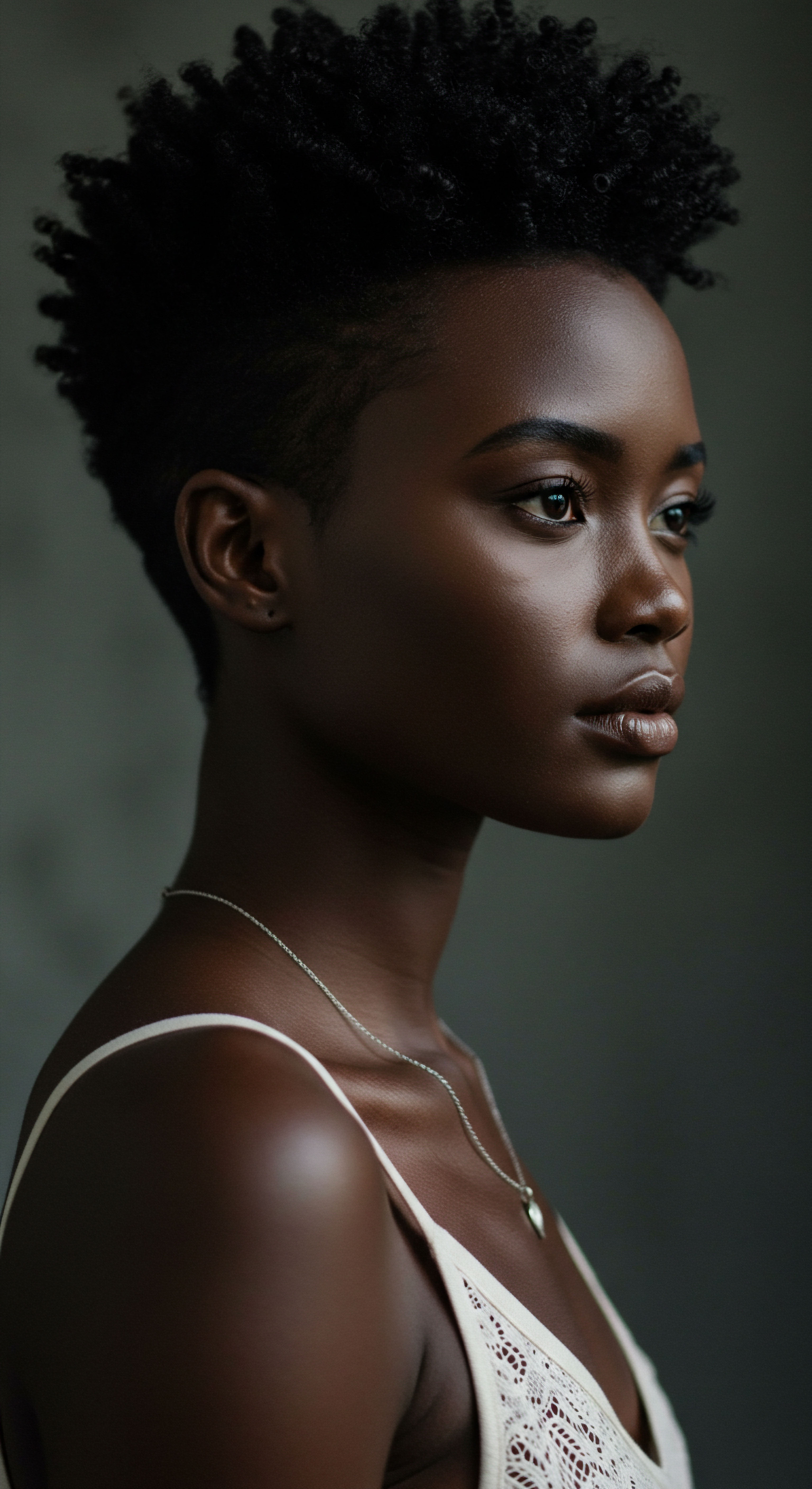
References
- Byrd, Ayana, and Tharps, Lori. Hair Story ❉ Untangling the Roots of Black Hair in America. St Martin’s Griffin, 2014.
- Chandrashekar, B.S. IADVL Textbook of Trichology. Jaypee Brothers Medical Publishers, 2017.
- Dabiri, Emma. Twisted ❉ The Tangled History of Black Hair Culture. Harper Perennial, 2020.
- Davis-Sivasothy, Audrey. The Science of Black Hair ❉ A Comprehensive Guide to Textured Care. Saga Publishing, 2011.
- McGhee, Angela Adams. Definitive Trichology’s Complete Guide to Healthy, Beautiful Hair. Definitive Formulations, 2015.
- Ray, Dr. Dave A. What Is GOOD HAIR? ❉ A Simplified Trichology Manual. CreateSpace Independent Publishing Platform, 2016.
- Schwartz, A. M. and Knowles, D. C. “Frictional Effects in Human Hair.” Journal of the Society of Cosmetic Chemists, vol. 14, no. 1, 1963, pp. 47-58.
- Bhushan, B. et al. “Friction Dynamics of Straight, Curly, and Wavy Hair.” Journal of the Society of Cosmetic Chemists, vol. 65, no. 5, 2014, pp. 497-511.
- Saxena, R. et al. “Topical Coconut Oil Application to the Scalp Alters the Scalp Microbiome and Improves Dandruff Parameters.” Journal of Cosmetic Science, vol. 70, no. 4, 2019, pp. 241-254.
- Gao, Y. et al. “Characterization of distinct microbiota associated with androgenetic alopecia patients treated and untreated with platelet-rich plasma (PRP).” Experimental and Therapeutic Medicine, vol. 26, no. 2, 2023, pp. 106.